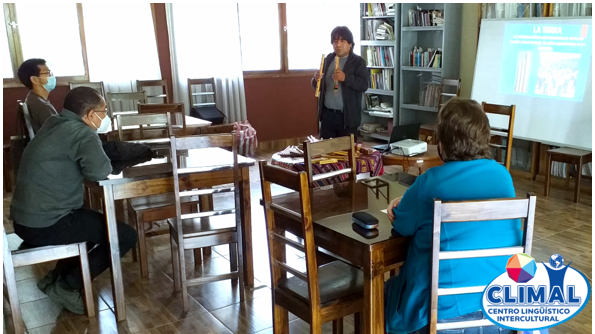
Andean music
Andean music is an artistic expression deeply connected to the indigenous cultures of the Andes, spanning countries like Bolivia, Peru, Ecuador, Chile, and Argentina. This musical genre is known for its ability to evoke mountainous landscapes, nature, and the daily life of Andean people through its unique melodies and characteristic sounds. A fundamental aspect of this music is the instruments that comprise it, each with a history and cultural significance that has been passed down through generations.
Wind Instruments
Wind instruments are perhaps the most emblematic of Andean music. These are traditionally made from natural materials such as cane, wood, bone, and clay.
- Zampoña or Siku: This instrument is one of the most representative. It consists of a set of cane tubes of different sizes, joined together, and played by blowing across the edges. The zampoña is used in various festivals and rituals, and its sound is unmistakable, evoking the wind that sweeps through the mountains.
- Quena: The quena is a vertical flute made of cane, wood, or bone, with a notch cut in a “U” shape at the mouthpiece. It is known for its melancholic and nostalgic sound, which mimics the songs of birds and the echo in the Andean valleys.
- Antara: Similar to the zampoña but generally larger and with a tube arrangement that allows for a wider range of sounds, the antara is another important wind instrument in Andean music.
String Instruments
String instruments in Andean music also play a crucial role, introduced by Spanish colonizers but adapted and transformed by local cultures.
- Charango: The charango is a small string instrument that resembles a guitar but is smaller. Traditionally, its resonator was made from an armadillo shell, though fine woods are used today. The charango has five double strings and is played with a quick, rhythmic technique that adds a vibrant and cheerful sound to Andean melodies.
- Andean Guitar: Although the guitar was introduced by the Spanish, it has been fully integrated into Andean music. It is used to accompany wind melodies and to play traditional rhythms like the huayno.
- Andean Bass or Bombo: This low-frequency string instrument, a variant of the traditional bass, is used to mark the rhythm in Andean music, providing a solid foundation to the melodies.
Percussion Instruments
Percussion in Andean music is used to mark the rhythm and accompanies wind and string instruments.
- Bombo: The Andean bombo is a large double-headed drum played with mallets. It is primarily used in ceremonies and dances; its deep, resonant sound marks the beat of the music.
- Caja: The caja is a smaller drum, also used to mark the rhythm in traditional music. Its sound is sharper and is used in combination with other percussion instruments.
- Chajchas: Made from dried goat or sheep hooves, the chajchas are used as maracas to add a subtle and unique rhythmic sound. They are common in folk dances.
Cultural Significance
Each of these instruments is not only a means of producing music but also holds deep spiritual and cultural significance. Andean music is a way of communicating with nature and ancestors, a means to tell stories, and express the identity of the Andean people. These instruments, with their characteristic sounds, help keep traditions alive, creating a bridge between the past and the present.
In summary, Andean music is a rich amalgam of sounds that reflect the diversity and cultural depth of the Andes. Its instruments, from the zampoñas to the charango, are not just tools for musical creation but also symbols of a cultural heritage that has endured through the centuries.

